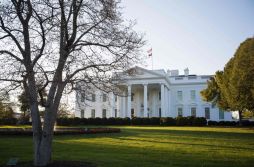White House data guru to counties: Unlock your data

Pulling data out of silos and making it more accessible can help give county government apps a user experience just as good as the ones consumers use to check the weather on their smartphone, the White House’s chief data scientist said.
“The No. 1 thing about making data open is just getting it out there and opening it up,” Patil said. “How do you create a great user experience? Open a weather app — the app is just an icon. Sitting behind that icon is terabytes of data a day, and somebody else has built a really great system to do that.”
During a fireside chat moderated by Phil Bertolini, the chief information officer for Oakland County, Michigan, at the National Association of Counties’ Technology Innovation Summit, White House Chief Data Scientist DJ Patil told an audience of county government technology officials about the “powerful notion” of what data can do.
“The No. 1 thing that we see across all the counties, and the thing I want to make sure all of you hear very crisply is that the biggest blocker to using data are these data silos,” Patil said. “One of the biggest things that we focus on [at the White House] is unlocking that data and unleashing that data.”
Patil encouraged county officials to look at President Barack Obama’s executive order on defaulting government information to be presented in a machine-readable format and be open by default.
“The president, who is a constitutional law professor, recognizes that data is one of those things we need to tap into,” Patil said. “His recognition is — who is going to make sure we make this a priority and who are we going to hold accountable for making sure that we’re making forward progress.”
Patil turned to the federal government’s data.gov as an example of how to push as much data into the public sphere as possible. Data.gov, which launched in 2009, now makes more than 220,000 data sets available to the public, Patil said. But what has proved to be the biggest win for data.gov has not necessarily been the availability of the data to the public, but rather the availability of data to different areas of the federal government — and state and local government.
“When a data set goes up, it’s not always the public that looks at it,” Patil said. “It’s some other part of the government that looks at it that has been trying to get to it. [Open data] forces a level of interoperability.”
Patil acknowledged, though, that opening data at the county level can be hard, especially because of vendor-designed data silos that keep data in structured areas that make it difficult to open and share. However, Patil also noted a change in how governments are able to take more control when negotiating with technology vendors on terms and conditions. With that extra control, Patil said, county governments can assert the need to make their data open and accessible instead of the siloed alternative.
“We are seeing a transformation across the country of local talent — local engineers who want to be put to work to make this happen,” Patil said. “As you get bigger in the scope of vendors, they can’t think for you. The vendors who provide this stuff need to understand that locking up data is never a good business practice.”






